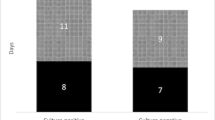Abstract
The aim of this study was to evaluate the diagnostic properties of urine Gram stain and urine microscopic examination for screening for urinary tract infection (UTI), and to perform an additional cost utility analysis. This descriptive study was performed on 95 urine samples sent for urine culture to the Department of Microbiology, Faculty of Medicine, Chulalongkorn University. The first part of the study was to determine the diagnostic properties of two screening tests (urine Gram stain and urine microscopic examination). Urine culture was set as the gold standard and the results from both methods were compared to this. The second part of this study was to perform a cost utility analysis. The sensitivity of urine Gram stain was 96.2%, the specificity 93.0%, the positive predictive value 94.3% and the negative predictive value 95.2%. False positives occurred with a frequency of 7.0% and false negatives 3.8%. For the microscopic examination, the sensitivity was 65.4%, specificity 74.4%, positive predictive value 75.6% and negative predictive value 64.0%. False positives occurred with a frequency of 25.6% and false negatives 34.6%. Combining urine Gram stain and urine microscopic examination, the sensitivity was 98.1%, specificity 74.4%, positive predictive value 82.3% and negative predictive value 97.0%. False positives occurred with a frequency of 25.6% and false negatives 1.9%. However, the cost per utility of the combined method was higher than either urine microscopic examination or urine Gram stain alone. Urine Gram stain provided the lowest cost per utility. Economically, urine Gram stain is the proper screening tool for presumptive diagnosis of UTI.
Similar content being viewed by others
References
Blumberg EA, Abrutyn E (1997) Methods for the reduction of urinary tract infection. Curr Opin Urol 7: 47
Gillenwater JA (1996) Adult and pediatric urology, 3rd edn. Mosby-Year Book, St. Louis
Kunin CM (1997) Urinary tract infections: detection, prevention, and management, 5th edn. Williams & Wilkins, Baltimore
Washington JA, Henry JB (1984) Medical microbiology. In: Henry JB (ed) Clinical diagnosis and management, 17th edn. Saunders, Philadelphia
Paritpokee N (2001) Urine sediment. In: Charuruks N, Sutheesophon K, Boonchalermvichian C (eds) Clinical pathology. Chulalongkorn University Press, Bangkok, p 361
Krieger JN (2002) Urinary tract infections: what’s new? J Urol 168: 2351
Hooton TM (2000) Pathogenesis of urinary tract infections: an update. J Antimicrob Chemother 46 [Suppl 1]: 1
Hummers-Pradier E, Kochen MM (2002) Urinary tract infections in adult general practice patients. Br J Gen Pract 52: 752
Crout FV, Tilton RC (1984) Rapid screening of urine for significant bacteriuria by Gram stain, acridine orange stain, and the Autobac MTS system. Diagn Microbiol Infect Dis 2: 179
Olson ML, Shanholtzer CJ, Willard KE, Peterson LR (1991) The slide centrifuge Gram stain as a urine screening method. Am J Clin Pathol 96: 454
Goldsmith BM, Campos JM (1990) Comparison of urine dipstick, microscopy, and culture for the detection of bacteriuria in children. Clin Pediatr (Philadelphia) 29: 214
Carroll KC, Hale DC, Von Boerum DH, Reich GC, Hamilton LT, Matsen JM (1994) Laboratory evaluation of urinary tract infections in an ambulatory clinic. Am J Clin Pathol 101: 100
Hussain R, Chaudhry NA, Anwar MS, Khan SA, Munir M, Tayyab M (1996) Evaluation of dipstrips, direct gram stain and pyuria as screening tests for the detection of bacteriuria. J Pakistan Med Assoc 46: 38
Acknowledgements
The authors would like to thank Mrs. Sukunya Muangorn and Mrs. Surankana Phongpian, B.Sc. for the assisting as medical technologists in this study. This study was supported by the Educational Fund of the Faculty of Allied Health Science, Chulalongkorn University, Thailand. The authors would like to thank all medical personnel of the Department of Laboratory Medicine, Department of Microbiology, Faculty of Medicine, Chulalongkorn University and all medical personnel of Faculty of Allied Health Science, Chulalongkorn University who helped us perform this study. Also we would like to thank all experts in both the Faculty of Medicine and the Faculty of Allied Health Science, Chulalongkorn University who gave suggestions for the improvement of our study.
Author information
Authors and Affiliations
Corresponding author
Rights and permissions
About this article
Cite this article
Wiwanitkit, V., Udomsantisuk, N. & Boonchalermvichian, C. Diagnostic value and cost utility analysis for urine Gram stain and urine microscopic examination as screening tests for urinary tract infection. Urol Res 33, 220–222 (2005). https://doi.org/10.1007/s00240-004-0457-z
Received:
Accepted:
Published:
Issue Date:
DOI: https://doi.org/10.1007/s00240-004-0457-z




